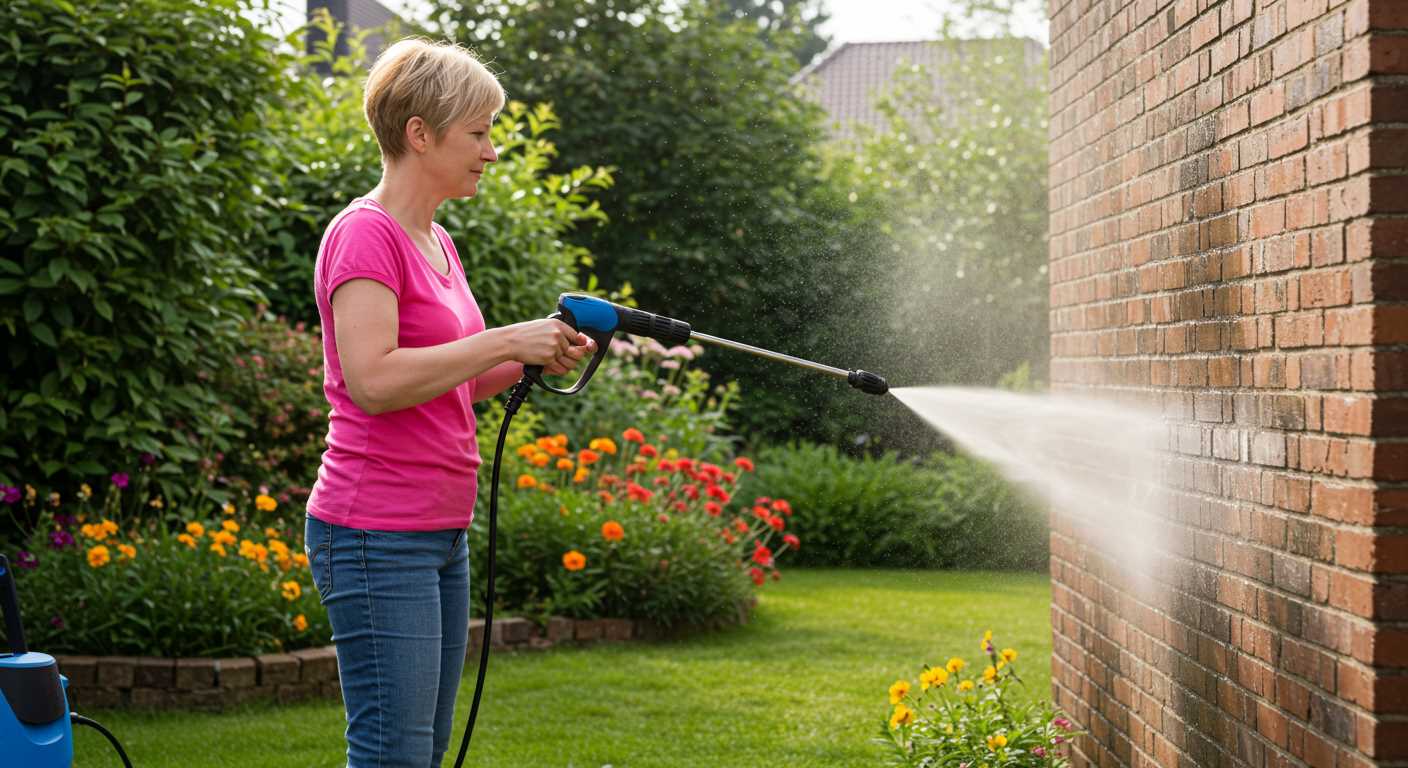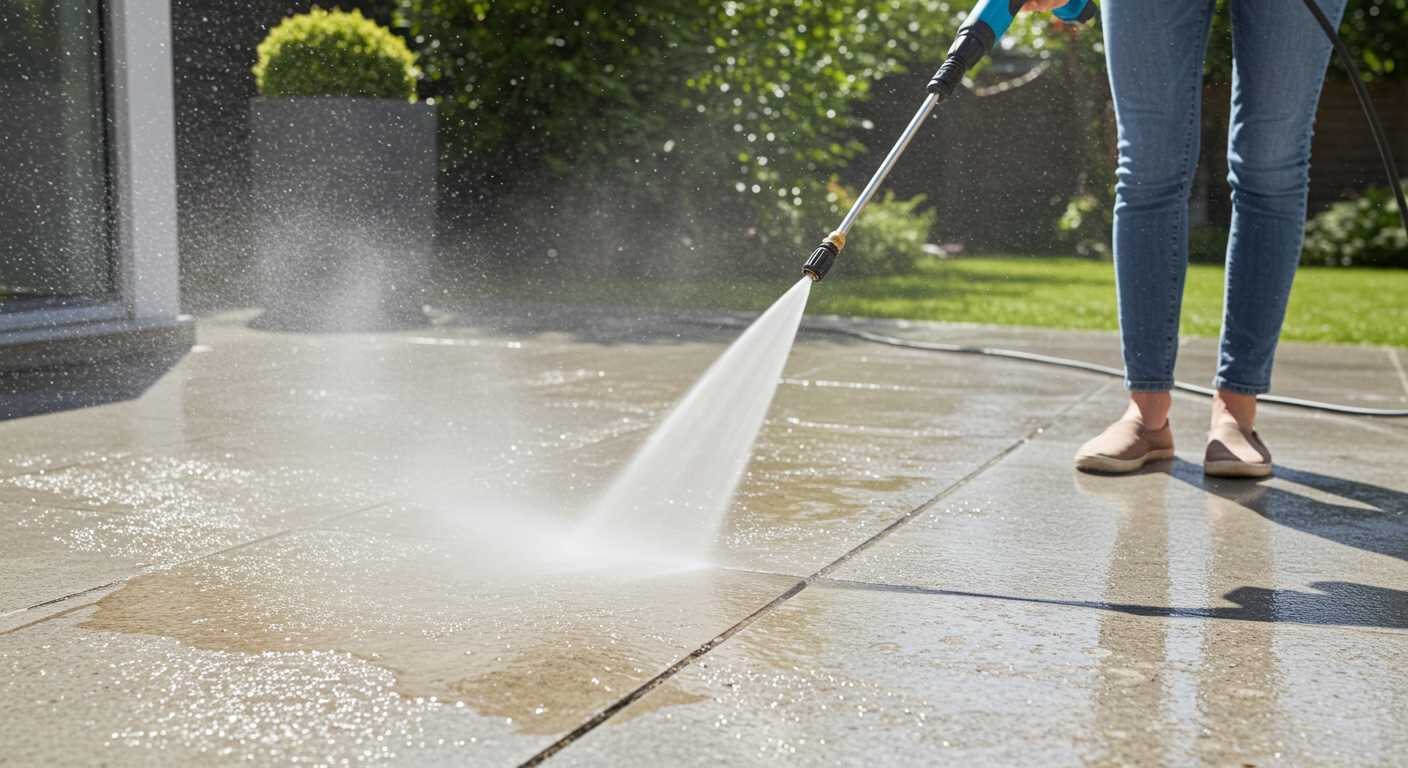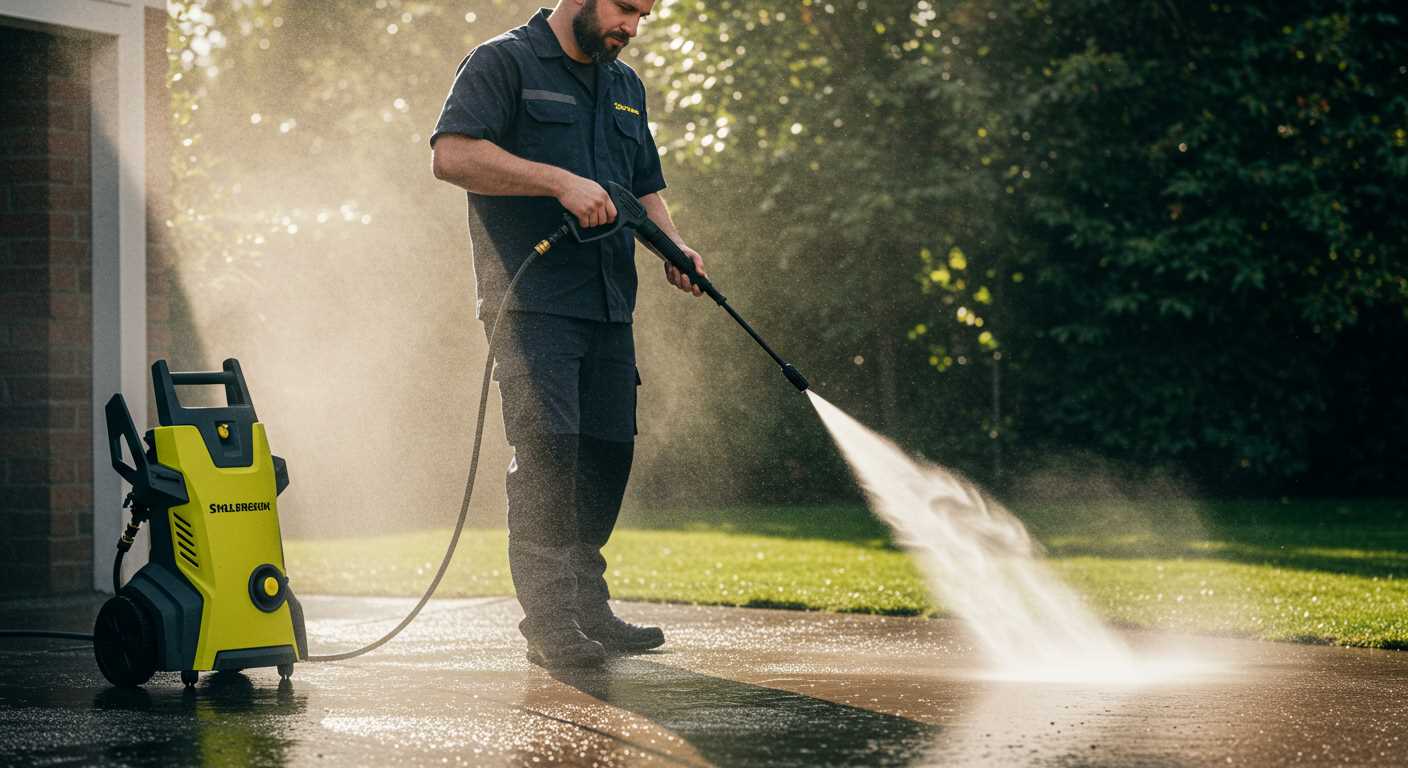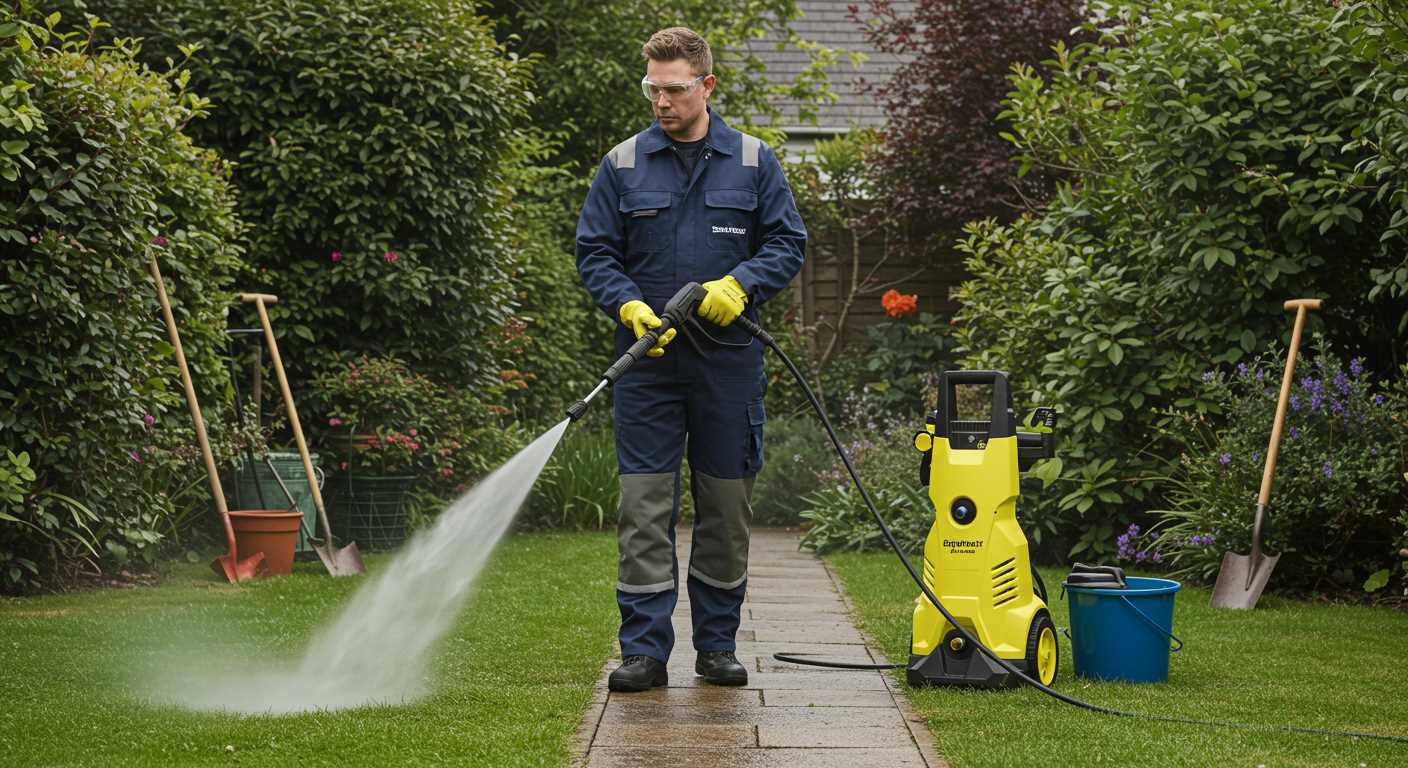




For an effective refresh of your outdoor area, utilising a high-pressure device is a game changer. I remember my first experience using one on my own patio; the transformation was astonishing. A few simple tips can help you achieve similar results without damaging the surface.
Begin by clearing the area of any furniture, plants, or debris. Protect nearby surfaces with tarps or plastic sheeting if necessary. This preparation not only ensures safety but also allows for a thorough clean. I once skipped this step and regretted it when splashes marred my garden decor.
Select the right nozzle for your task–typically, a 25-degree or 40-degree nozzle works best for softer materials. During my years in the industry, I learned that using too narrow a stream can gouge the wood. Keep the nozzle at a consistent distance, about 12 to 18 inches from the surface, to avoid any unwanted damage.
Employ a detergent designed for outdoor surfaces to enhance the cleaning process. I’ve found that applying it with a low-pressure setting allows it to penetrate the grime effectively. Allow the solution to dwell for a few minutes before rinsing; this step is often overlooked but makes a significant difference in the outcome.
Finally, after rinsing, inspect the area for any missed spots. A second pass may be necessary for stubborn stains. Trust me, it’s worth taking the time to ensure every inch sparkles. The satisfaction of seeing a revitalised area is unparalleled, and it sets the stage for enjoyable outdoor gatherings.
Steps for Restoring Timber Surfaces
Begin by setting the pressure setting to around 1200-1500 PSI. This level is sufficient to eliminate dirt without damaging the surface. I recall a time when I used a higher setting, thinking it would yield better results, but it left marks and caused splintering. Adjusting to the right pressure made all the difference.
Before you start, ensure the area is free of furniture and plants. Protect any nearby items with tarps or plastic sheeting. I once neglected this step and ended up with a few scuffed chairs and a distressed flowerbed. Prevention is key.
Cleaning Solution Application
Mix a cleaning solution specifically designed for timber surfaces. I prefer using a biodegradable option; it’s safer for the environment and effective at breaking down grime. Apply the solution with a garden sprayer, letting it sit for about 10-15 minutes. This soak time allows the cleaner to penetrate the muck, making removal easier.
Washing Technique
Hold the nozzle about 12-18 inches from the surface and maintain a steady, sweeping motion. An even approach prevents uneven cleaning and reduces the risk of gouging the timber. I’ve learned the hard way that stopping and starting too frequently can lead to lines or streaks. Keep the nozzle moving to achieve a consistent finish.
| Tip | Description |
|---|---|
| Angle | Use a 45-degree angle for optimal results; this helps dislodge debris without forcing water into the wood. |
| Rinsing | After washing, rinse thoroughly with clean water to remove any residue from the cleaning solution. |
| Drying | Allow the surface to dry completely before applying any sealants or stains. This helps ensure proper adhesion. |
Once dry, consider applying a protective finish to prolong the life of your timber surface. I’ve seen a significant difference in durability and appearance when a good quality sealant is used after cleaning. Regular maintenance will keep it looking fresh and inviting for years.
Choosing the Right Pressure Washer for Your Deck
For effective maintenance of your outdoor surfaces, selecting the right cleaning machine is crucial. Based on my extensive experience, I recommend considering the following factors when making your choice:
Pressure and Flow Rate
- Pressure Rating: Look for a unit with a pressure rating between 1200 to 2300 PSI. This range will provide adequate force to remove dirt and grime without damaging the wood.
- Flow Rate: A flow rate of 1.5 to 2.5 GPM ensures efficient cleaning. Higher flow rates can rinse away debris more effectively.
Nozzle Options
- Adjustable Nozzle: Opt for machines that come with adjustable nozzles. This flexibility allows you to change the spray pattern according to the task at hand.
- Turbo Nozzle: For stubborn stains, a turbo nozzle can significantly enhance cleaning power by rotating the spray, providing a wider coverage area.
Electric models are often quieter and ideal for residential use, while gas-powered versions deliver higher performance for larger areas. For a reliable option, consider this domestic Karcher pressure washer. Its balance of power and user-friendliness makes it a solid choice.
Lastly, check the weight and portability of the machine. A unit with wheels and a lightweight design will make manoeuvring around your yard hassle-free. Choose wisely, and your outdoor surfaces will thank you for it.
Preparing Your Deck for Cleaning
Clear the area of all furniture, plants, and obstacles. This ensures an unobstructed path for the cleaning process. I once underestimated this step and had to spend extra time moving items around. It’s far easier to prepare beforehand than to work around things.
Inspect for Damage
Take a moment to look for any signs of wear or damage on the surface. Look for loose boards, cracks, or splintered areas. I’ve seen decks where minor issues became major headaches post-cleaning. Addressing these problems before starting can save time and money later.
Choose the Right Detergent
Select a suitable detergent for your surface. Not all cleaning solutions are created equal; some can damage the wood or finish. I’ve experimented with various products, and I recommend using ones specifically formulated for your material. Always read the label for instructions and dilution ratios.
Once you’ve prepared the area and chosen the right products, you’re ready to move forward confidently. Each step you take now sets the stage for an outstanding finish later.
Selecting the Appropriate Cleaning Solution
For optimal results, selecting the right cleaning substance is crucial. I’ve experimented with various formulas, and I’ve found that a mixture of water and a dedicated wood cleaner works wonders. Look for products labelled for timber surfaces; they often contain ingredients that protect the material while removing grime.
Understanding Chemical Components
When evaluating options, focus on biodegradable cleaners. They are less harmful to the environment and safe for nearby plants. Avoid harsh chemicals like bleach, as they can damage the wood’s integrity. Instead, opt for oxygen bleach or vinegar-based solutions that gently lift stains without causing harm.
Concentration and Application
Follow the manufacturer’s instructions regarding dilution ratios. A concentrated cleaner may require mixing with water before application. I’ve learned from experience that applying the solution directly onto the surface and letting it sit for 10-15 minutes enhances its effectiveness. This allows it to penetrate the dirt and stains, making removal easier during rinsing.
For those interested in multitasking while cleaning, consider the versatility of the pressure washer. For instance, after finishing the outdoor area, you can switch tasks and use it for other chores, like preparing meals. If you’re curious about timing, check out how long to reheat soup in a pressure cooker UK for a seamless cooking experience.
Techniques for Using a Pressure Washer on Wood
Begin by selecting the right nozzle. A 25-degree or 40-degree nozzle is ideal for softer surfaces, as it disperses the water over a wider area, reducing the risk of damage. For stubborn stains, consider using a 15-degree nozzle, but keep the distance between the nozzle and the surface at least 12 inches to avoid gouging.
Angle and Distance Matter
Maintain a consistent angle while working. Keeping the nozzle at a 45-degree angle helps to lift dirt without forcing it into the wood grain. Move the wand in smooth, sweeping motions rather than focusing on one spot too long, which can lead to uneven surfaces. Always maintain a distance of about 12 to 18 inches from the surface to ensure the water pressure is effective yet gentle enough for the material.
Sectional Approach
Work in small sections, approximately 4 feet at a time. This allows you to maintain control and ensures thorough cleaning. Start from the highest point and move downwards, preventing dirty water from running over already cleaned areas. Once a section is done, inspect it before moving on to the next to ensure all spots are adequately addressed. After finishing, rinse the entire area thoroughly to remove any residual cleaning solution.
Post-Cleaning Care for Your Wooden Surface

After finishing the washing process, the first step is to allow the timber to dry completely. This can take anywhere from 24 to 48 hours, depending on the weather conditions. Avoid placing furniture or rugs back onto the area until it’s fully dried to prevent moisture retention.
Sealing and Protecting
Applying a quality sealant is crucial to protect the surface from moisture, UV rays, and everyday wear. Choose a sealant that’s specifically designed for wood, ensuring it penetrates well for maximum effectiveness. I’ve seen many homeowners achieve excellent results by using a semi-transparent stain, which not only offers protection but also enhances the natural beauty of the timber.
Regular Maintenance Schedule
Implement a routine maintenance plan. Inspect the area for any signs of wear or damage every few months. A light wash every season can help maintain its appearance. Additionally, consider reapplying the sealant every couple of years to keep the surface in top condition. This proactive approach extends the life of your investment significantly.
Common Mistakes to Avoid When Pressure Washing Wood
Using a high-pressure cleaner is straightforward, but errors can lead to significant damage. Here are the most common pitfalls I’ve encountered over the years.
- Excessive Pressure: Many underestimate the impact of pressure. Too much force can gouge or splinter the surface. I recall a client who used maximum settings and ended up replacing several boards.
- Incorrect Nozzle Selection: Choosing the wrong nozzle can be disastrous. A narrow jet can cause harm, while a wide spray may not remove dirt effectively. I always recommend starting with a wider nozzle and adjusting as needed.
- Not Testing a Small Area: Skipping this step can lead to unexpected results. I always test in an inconspicuous spot to gauge the effect before proceeding to the entire area.
- Ignoring the Grain Direction: Failing to follow the grain can create an uneven finish. Remember, wood is unique, and treating it as such can yield better results.
- Using Harsh Chemicals: Strong cleaners can damage the surface or harm surrounding plants. I prefer eco-friendly options that are effective yet gentle.
- Cleaning in Direct Sunlight: Working in bright sunlight can cause cleaning solutions to dry too quickly, leaving streaks. I often advise to tackle shaded areas whenever possible.
- Skipping Safety Gear: Neglecting protective equipment can lead to injuries from flying debris. Always wear goggles and sturdy footwear.
- Not Allowing Proper Drying Time: Rushing the drying process can trap moisture, leading to mould growth. Patience here pays off.
Each mistake can lead to additional costs or frustrations. By being mindful of these points, you can achieve a satisfying outcome without unnecessary headaches.






.jpg)


